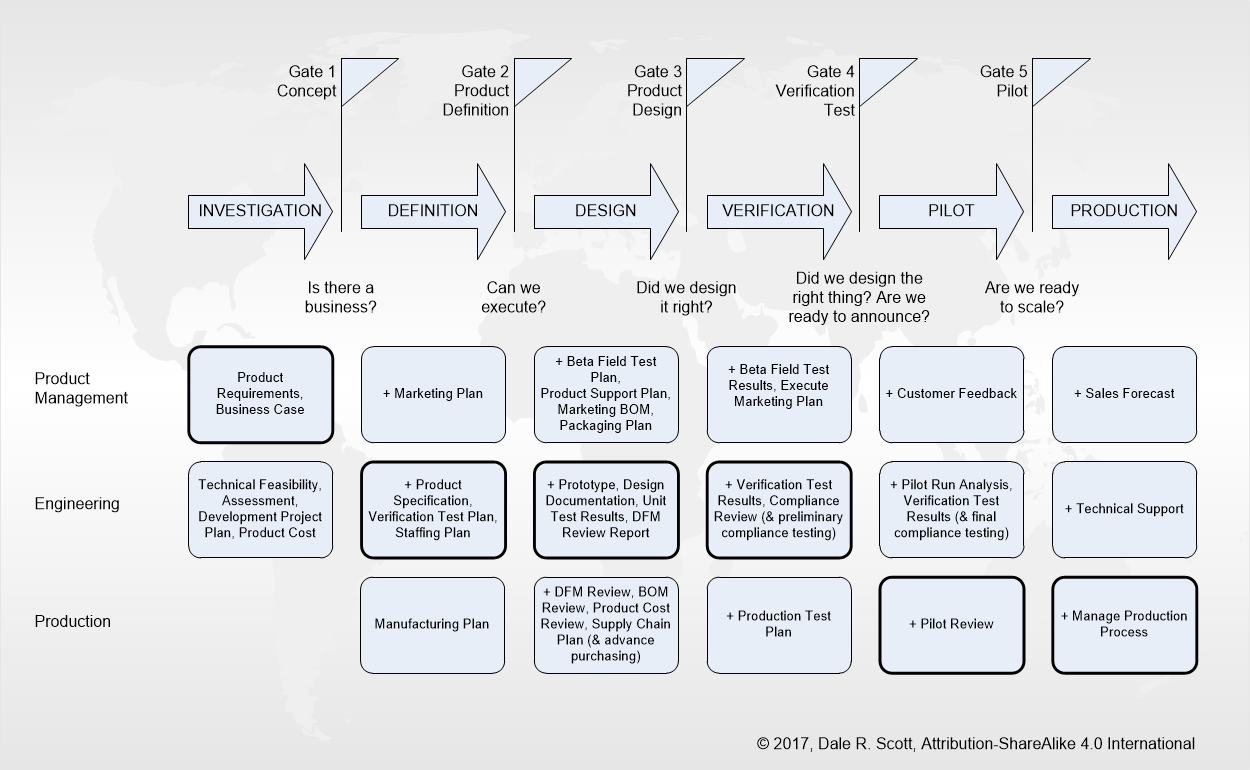The gated product development process has been discounted of late due to a perception of it being too rigid and inappropriate in an age of continuous integration and deployment. However, people are not continuous beings, and a continuous process is discrete at some level, such as effort measured in person days, or releases measured according to the rules of semantic versioning (version x.y.z). Discretizing can also be a mental aid, providing sign posts for the stakeholders to focus on during the continuous drive from Point A to Point B.
Product development can be discretized by dividing a project into phases, moving from concept to production, and finally retirement. I have developed a model useful for understanding product development within Small to Medium Enterprises (SMEs). It is based on how the involvement of resource groups changes over the life of the project, and which group provides leadership (or ownership) during each phase (leadership for a phase identified in bold).
Although Product Management is identified as a resource group, it is often not formalized in an SME and instead provided through the combined leadership of the organization, typically led by either the CEO/President/Founder, the head of Sales or the head of Engineering. The essence of a small organization is that people wear many hats, which is not an issue so long as leaders are aware which hat they need to wear when making a decision. For example, if the head of engineering is also the product domain specialist and major contributor to product management, they must be careful not to let decisions regarding which features are necessary from a customer perspective be driven by which features are attractive from a development perspective.

